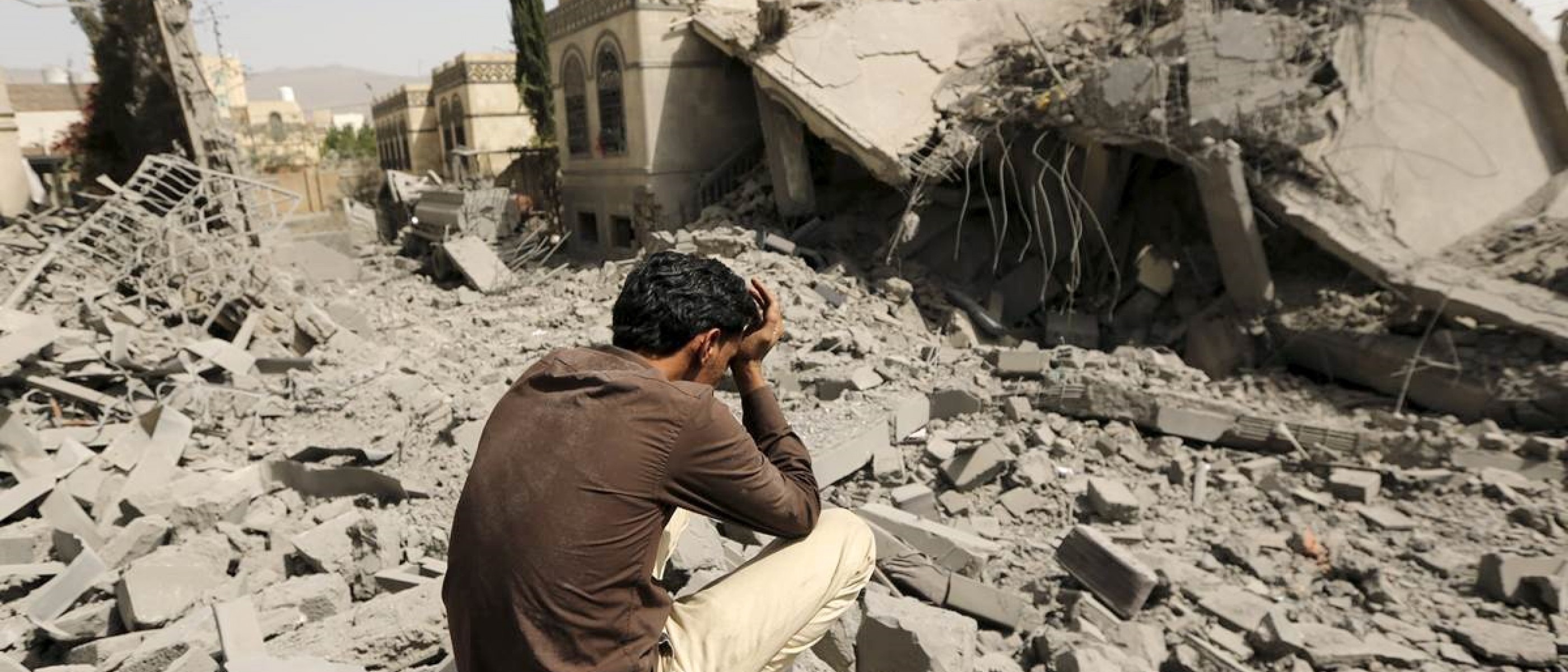On September 1, 2019, nearly 100 civilians died in Saudi Arabia’s deadliest attack of the year — an overnight offensive on Dhamar, a city in the southwestern region of Yemen. Attacks such as these contribute to regional instability, a hallmark of Saudi Arabia’s continuous commitment to the war in Yemen.
The war in Yemen is a humanitarian crisis. Since it began in 2015, the war has claimed nearly 100,000 lives, displaced 2 million people, and left another 22 million in dire need of assistance. Saudi Arabia, a key player in the war, is overwhelmingly funded by the United States, linking the United States with the war’s continuation and, by default, its atrocities.
Yemen has been wrought with instability since September 2014 when the Houthis — a group of Shiite rebels with links to Iran — took control of the Yemeni government. This encouraged a series of Saudi Arabian airstrikes beginning on March 26, 2015. The four years that followed have seen the involvement of international actors and a corresponding rise of the Saudi-led coalition, significantly escalating the conflict.
International Participation
The Saudi coalition, responsible for funding and organizing military action in Yemen, is composed of seven countries: Saudi Arabia, the United Arab Emirates (U.A.E.), Kuwait, Bahrain, Qatar, Sudan and Egypt. The latter five, however, have contributed significantly less than Saudi Arabia and the U.A.E., only infrequently supplying fighter jets and naval vessels.
In addition, a large group of countries contribute to the war by proxy, selling arms to Saudi Arabia or the U.A.E. However, in recent months Saudi benefactors have drastically decreased their involvement due to increased violence in the region. Despite these decreases, however, the value of Saudi imports has increased. This net increase is due to the United States’ fervent commitment to the war in Yemen. No country’s support for Saudi Arabia rivals that of the U.S. It accounts for 61 percent of arms sales; Britain follows with only 23 percent of overall arms. In 2018, Washington sold $3.4 billion of arms to Ridayh.
U.S. arms sales are consistently indicted for their contribution to the war in Yemen. The justification for this argument is two-fold. First, the United States’ sales send a diplomatic green light, communicating that the coalition’s involvement in the war in Yemen is valid. Second, arms sales relieve the Saudis of a significant resource burden. Sales allow Saudi Arabia to spend weapon production expenditures elsewhere and still access a reliable stream of weaponry. In any case, these sales they allow Saudi Arabia to sustain the conflict. Nearly every effort by the United States’ Congress to curtail aid has been unsuccessful. Even with legislative pressure, the Trump administration — and the Obama administration that preceded it — defends the Saudi effort.
Why has the U.S. Involved Itself in Conflict?
Firstly, Saudi Arabia is a key United States ally. The country is the largest and most influential producer of OPEC, making a US-Saudi alliance geopolitically strategic. A sound relationship with Saudi Arabia assures access to a reliable oil supply. Furthermore, Saudi Arabia is a key ally in the Middle East, providing the U.S. with intelligence and spearheading counterterrorism efforts. Secondly, the U.S. contribution to Saudi Arabia is understood as a proxy war with Iran. The Houthis, who control significant portions of Yemen, are backed by Iran. Rising U.S.-Iran tensions display that even if the Houthis pose little direct threat to the United States, Iran could. Combatting Iran in Yemen saves the United States from direct confrontation with its adversary but still allows for the assertion of its primacy.
Has it Worked?
The United States’ policy towards Yemen has failed to achieve its primary objectives. U.S. involvement has only strengthened an alliance between Iran and the Houthis by providing them with a shared enemy. Shipments from Iran to the Houthis have been intercepted by a Saudi naval blockade. In response, Iran placed its own blockade on the Gulf of Aden, heightening tensions between the Saudi cause and the Iranian one. Additionally, consistent drone attacks further Al-Qaeda’s explanation of the U.S. as islamophobic and careless. Furthermore, terrorists thrive off chaos in Yemen. Without a vigilant or consistent government, Al-Qaeda capitalizes on civilian unrest to sustain its power
In Defense of U.S. Presence
In defense of a U.S. presence in the region, some say that U.S. arms sales are necessary to deter another aggressive power like Russia from pursuing an alliance with Saudi Arabia. This is unlikely; although Moscow has relations with Ridayh, transforming a U.S.-funded Saudi military to a Russia-funded one would be incredibly costly. Russia’s current contributions to the conflict are negligible, so assuring a transition would take years — curtailing Ridayh’s power in the interim. Lastly, Russia is incapable of producing U.S.-grade tanks and vehicles necessary for high magnitude conflict.
Critics explain that Saudi Arabia is a key counterterrorism ally in the Gulf. This position sustains that continuing, and potentially increasing, U.S. aid creates a balance of force which stagnates Al-Qaeda’s growth. American-made weapons have been transferred to Al-Qaeda and Iran-backed rebel groups. Saudi Arabia has consistently used American weapons to bribe militias for their support. An underground market has also arisen wherein indirect transfers occur between Saudi soldiers and terrorist organizations.
Conclusion
To end the war in Yemen, the United States should end its provision of military aid to Saudi Arabia. Although complete removal is radical, it is a necessary step for peace. The U.S. diplomatic presence can continue despite the lack of a military one, utilizing hegemony to accelerate a negotiation between relevant parties. Even if the U.S. isn’t supplying arms, Saudi Arabia would be receptive to its pressure, hoping to maintain this important alliance. Suspension of aid would ground the Saudi Air Force, which is responsible for US-funded air strikes, and encourage Saudi Arabia to pursue effective peace talks. Although the conflict would not end immediately, a withdrawal of aid would gradually decrease violence and instability in Yemen.
Featured Image Source: Reuters






Be First to Comment